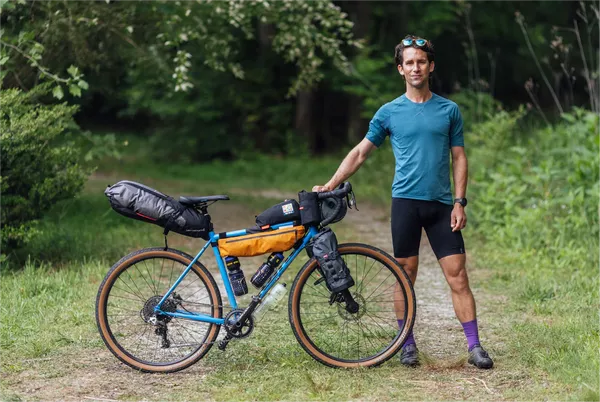Varicose veins, those bulging, twisted veins that commonly appear on the legs, are often associated with occupations or activities that involve prolonged standing. However, they can also affect athletes, including cyclists. Despite the health benefits of cycling, such as improved cardiovascular fitness and muscle strength, cyclists are not immune to developing varicose veins. Understanding the reasons behind this can help in both prevention and management.
Understanding Varicose Veins
Varicose veins occur when veins become enlarged, dilated, and overfilled with blood. This condition is primarily due to the malfunctioning of valves within the veins, which are designed to prevent the backflow of blood. When these valves fail, blood pools in the veins, causing them to enlarge and become varicose.
Several factors contribute to the development of varicose veins, including genetics, age, gender, pregnancy, obesity, and prolonged standing or sitting. While cycling is generally considered a beneficial exercise, the physical demands and specific conditions of the sport can also contribute to the risk of developing varicose veins.
Mechanisms Leading to Varicose Veins in Cyclists
Prolonged Sitting Position
Cycling involves prolonged periods in a seated position, which can impede blood flow in the legs. When a cyclist is in the saddle, the pressure on the veins in the pelvic area increases, potentially leading to restricted blood flow. Over time, this can cause the valves in the veins to weaken, making it harder for blood to be pumped back to the heart and leading to varicose veins.
Increased Venous Pressure
The intense physical exertion of cycling can increase venous pressure, especially in the legs. The act of pedaling requires repetitive and sustained contractions of the leg muscles, which can exert pressure on the veins. While muscle contractions generally aid in venous return by compressing the veins and pushing blood towards the heart, excessive pressure can strain the venous valves, leading to their dysfunction over time.
Dehydration and Electrolyte Imbalance
Cyclists, particularly those engaged in long-distance or high-intensity training, are at risk of dehydration and electrolyte imbalance. Dehydration reduces blood volume and can lead to thicker, more viscous blood, making it harder for the veins to function efficiently. This can exacerbate the strain on venous valves, contributing to the development of varicose veins.
Compression from Tight Clothing
Cyclists often wear tight-fitting clothing to reduce air resistance and enhance performance. However, this tight clothing, especially around the waist and thighs, can compress veins and hinder blood flow. Chronic compression can contribute to venous insufficiency, leading to varicose veins.
SEE ALSO: THE BEST WAY TO LOSE WEIGHT CYCLING
Prevention Strategies for Cyclists
Despite the risk factors, there are several strategies cyclists can adopt to minimize the likelihood of developing varicose veins.
Optimize Bike Fit
Ensuring a proper bike fit can reduce undue pressure on the pelvic area and improve blood circulation in the legs. A professional bike fitting can help adjust saddle height and position to distribute weight more evenly and reduce strain on the veins.
Hydration and Nutrition
Maintaining adequate hydration is crucial for cyclists to prevent blood viscosity and maintain healthy circulation. Additionally, a balanced diet rich in antioxidants, vitamins, and minerals can support vascular health. Foods high in fiber can also prevent constipation, which can exert pressure on veins in the lower body.
Compression Gear
Wearing compression stockings or sleeves can help improve blood flow in the legs by providing external pressure that supports the veins. This is especially useful during long rides or recovery periods. Compression gear can be an effective preventative measure for cyclists prone to varicose veins.
Regular Breaks and Leg Elevation
Taking regular breaks during long rides to stretch and elevate the legs can help reduce venous pressure. Leg elevation helps blood flow back to the heart more easily, reducing the risk of blood pooling in the veins.
Cross-Training and Varied Exercise
Incorporating cross-training into a cycling regimen can alleviate some of the repetitive strain on the veins. Activities such as swimming or walking can promote overall circulatory health and provide a balanced workout for the leg muscles without the constant pressure of cycling.
Management and Treatment
For cyclists who develop varicose veins despite preventive measures, several treatment options are available. Early intervention can help manage symptoms and prevent progression.
Lifestyle Modifications
Simple lifestyle changes can help manage varicose veins. Elevating the legs whenever possible, avoiding prolonged periods of sitting or standing, and wearing compression stockings can alleviate symptoms.
SEE ALSO: WHAT ARE THE DIFFERENT TYPES OF BIKE CLEATS
Medical Treatments
Several medical treatments are available for varicose veins, ranging from minimally invasive procedures to surgery. Sclerotherapy, where a solution is injected into the veins to close them, is one option. Endovenous laser treatment (EVLT) and radiofrequency ablation (RFA) use heat to seal off affected veins. In more severe cases, surgical options like vein stripping may be considered.
Physical Therapy
Physical therapy can help strengthen the muscles around the veins and improve circulation. Therapists can recommend specific exercises that target venous return and reduce symptoms.
Regular Medical Check-Ups
Cyclists, especially those with a family history of varicose veins, should have regular check-ups with a healthcare provider. Early detection and management can prevent complications such as chronic venous insufficiency or leg ulcers.
Conclusion
Cycling, while beneficial for overall health and fitness, can pose a risk for developing varicose veins due to factors like prolonged sitting, increased venous pressure, dehydration, and compression from tight clothing. However, with appropriate preventive measures such as optimizing bike fit, maintaining hydration, wearing compression gear, taking regular breaks, and incorporating varied exercises, cyclists can mitigate these risks.
For those who do develop varicose veins, a combination of lifestyle modifications, medical treatments, and regular check-ups can effectively manage the condition. Understanding the underlying mechanisms and taking proactive steps can help cyclists continue to enjoy their sport while maintaining vascular health.

